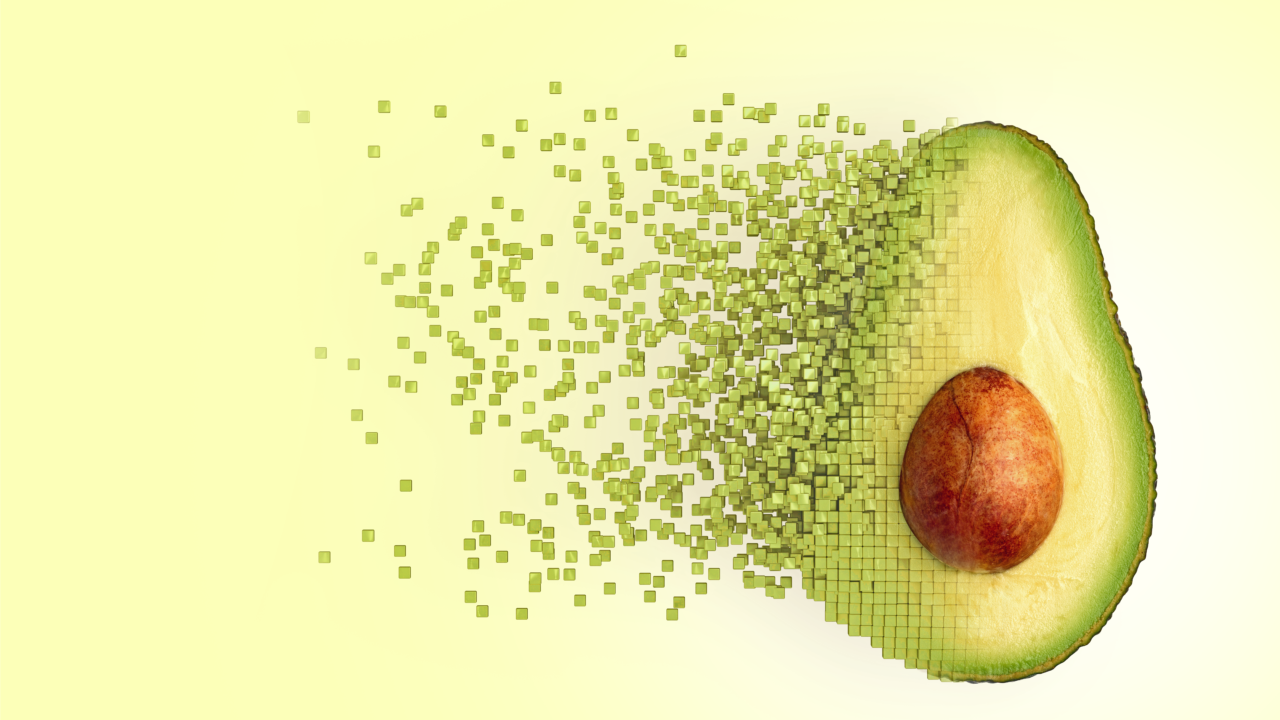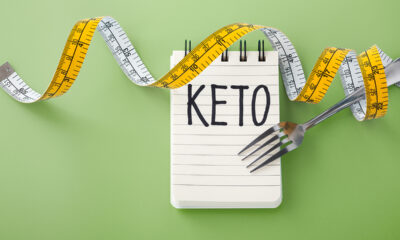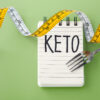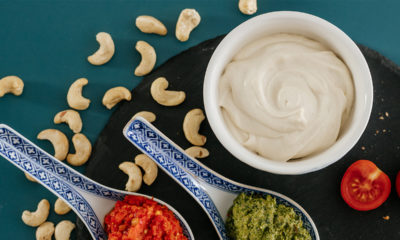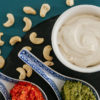Health
Bite Sized Misinformation
The scientific ‘information’ you’re receiving about your food is far more complex, and possibly inaccurate, than you’ve been led to believe. Sometimes, it’s an outright lie. Here’s what the food industry doesn’t want you to know about its best-selling products
There’s a sinister partnership that may be at play around the habits of your knife and fork and you’re probably not aware of its ins and outs. It involves an interplay between pharmaceutical industry and fast-food giants, where the former is kept very well fed by the latter. The two create a harmonious symphony of groans and moans while the masses gorge themselves on devilishly delicious tasting Frankenfood that’s as convenient as it is cheap. Joe Public then have to atone for those dietary sins by forking out for exorbitant medical bills in a futile attempt to neutralize the damage. It’s a symbiotic relationship that would have conspiracy theorists itching their tin foil hats. But as much as you try to write off this collaboration, there still remains a drug-based ‘cure’ for just about all your problems, no matter how big or small. Sadly, the notion of curing people, particularly through preventative nutritional measures, doesn’t exactly fatten the margins of the pharmaceuticals bottom line because the goal is to retain clients for the rest of their lives. And this means keeping you in this sickly cycle. Fortunately, you’re probably a little smarter than the characters in the TV commercials because you choose the preventative route where you watch what you eat and stick to the recommendations made by the latest nutrition research. Can that truly make a difference? Yes, but perhaps if you’re truly skeptical of big pharma then do you willingly gobble up the marketing and research issued by the Diary research institute, Almond Board of California or Idaho Potato Commission? Surely, they too have a profit margin to uphold. The questions keep mounting and are made significantly more complex if you’re a woman because your body may have different needs to a man. Here’s how to make sense of all the over-inflated nutrition research so you can decide what it means to your health and exercise performance.
The New Science
When you see the headline that blueberries can keep your heart strong, improve your memory and heal your aching muscles, this knowledge makes for a very easy win at the grocery store. Sadly, despite the $5 spend for the organic variety, that headline may only reflect how the writer interpreted the paper. This analysis could be widely divergent to how the actual researchers intended it to understood. And that’s if the research was even performed on people. Most of the time it would have been on mice (who tend not to complain as much), in which case it’s probably not quite as relevant to you as a human being.
That’s just one problem, because if you begin to consider how this system is applied to gender bias, then things get even more squirrelly because an ailment such as heart disease is widely known as the biggest killer of men, though it also fells almost as many women. Inexplicably, you don’t really hear about this. It’s as if heart disease doesn’t even kill one in five American women and this may be especially relevant when considering the medication to mitigate it.
You see, there’s even a systemic bias when banging out systemic reviews, found a review in >JAMA Network Open on cholesterol-lowering medication. They looked at 60 papers with over 485,409 people from 1990-2018 and found women were vastly underrepresented in lipid lowering trials compared to the levels at which they suffer from this disease. Just over half of the 60 trials reported their results based on effectiveness by gender. This means while you could take a cholesterol-lowering drug that works for a man, it may not be proven to work for a woman’s unique biology.
While this patriarchal prejudice is pertinent for drug trials, the same holds true for nutritional research because while foods may be found to be positive or negative to any ole human, it still remains very important to address gender differences. This particularly thorny area becomes even more complex when it comes to sports nutrition because fit women are severely underrepresented and too many of us believe what works for him will work for her. Fortunately, papers like one in the >Current Sports Medicine Reports have begun to course correct by finally addressing something called The Female Athlete Triad. This is the connection between inadequate energy intake, menstrual function, and bone-health. An imbalance in any of these areas can easily manifest as amenorrhea (missed periods, or irregular periods) osteoporosis, eating disorders and poor sports performance. What it does is put your ability to be a rock star athlete at the mercy of dubious nutrition research. However, this remains possibly the most flawed set of ‘facts’ you can rely upon.
An Indigestible Truth
Annoyingly, it’s very hard to make any categorically true statements about food and its benefits. The reason for this is that there are so many nutritional studies that wrongly push out research as unassailable facts. Initially, what triggered this style of research was the reductionist approach where a lack of a particular nutrient caused a deficiency that caused its associated side effects or diseases, such as the link between scurvy and vitamin C. This observation was a gigantic leap forward in preventative medicine, but this model remains somewhat tricky to apply to chronic afflictions such as heart disease or arthritis.
The reason for this is that most nutrition research is either a randomized controlled trial or a cohort observational study. In the double-blind version of the randomized trials, researchers and participants have no idea whether the participants belong to a controlled or open test group. This reduces bias, placebo or preconceived notions that could skew the results. This means everything else has to remain constant and controlled which can make costs skyrocket and dietary logistics become unruly, which is why most nutrition research seldom gets to this point.
Instead, what’s more prevalent is the use of longitudinal observational studies or epidemiological studies where people are tracked over time and asked what they eat so researchers can keep a clear record. What could go wrong? Well, this method means that whatever they write on the questionnaire is considered truth and the researchers link what they’re scoffing to whatever health issues they do or don’t have. Herein lies the true problem because we all lie. And we especially love to lie about how many vegetables we eat, the amount of chocolate we binge upon or the glasses of red wine we enjoy sipping next to the roaring fireplace.
Or perhaps we just have a selective memory about foods that magically enter the body unnoticed because we’re all hopelessly flawed creatures. After all, there are so many emotions attached to foods (yes, we’re looking at you guilt and shame) that all the defects impacting the human conditions can near on be dipped in pride and deep-fried in self-loathing.
A paper in the >International Journal of Obesity Related Metabolic Disorders even found when people were asked questions then were actually observed, they drastically under-reported the number of calories they ate on two separate occasions which were ten years apart. It shows we’re so hopelessly unaware of how much we’re eating that we aren’t even telling a lie, it’s just impossible to be completely accurate. And it’s this lack of true accuracy, in reporting nutrition and exercise habits, coupled with differences in metabolism that really impacts the accuracy of research results. This is especially valid when you’re told by a (very real) paper in the highly respected >Annals of Neurology that eating berries can pretty much stop your cognitive decline as you get older. That’s a very broad statement because not only was the precise or average volume of berries not measured, but cognitive decline is also a very complex subject with many different facets. So, even if someone was weighing their food and keeping tabs on every single gram, there’s still a good chance that this information wasn’t completely accurate. It means that when you’re given an exact benefit, yoked to a precise percentage, then there should be a good deal of variability allowed for, especially if gender wasn’t mentioned because what’s good for the gander may not always be good for the goose based on variables such as exercise, tolerance and metabolism.
Causation Versus Correlation
A global shortage of pirates has a very strong correlation to global average temperature. Obesity rates have climbed at the same rate a public debt. The birth of Justin Bieber was able to lower the world’s average cholesterol. These are all real statistics and correlations, but that doesn’t mean they’re true.
We’re hard-wired to seek cause and effect to understand the world. Run interval sprints and you’ll breath heavily. Fail to brush your teeth and you’ll probably get cavities. Buy dollar store toilet paper, you may get smelly hands.
But what most nutrition research papers report on is correlations not causations. These are deceptively similar but knowing the difference can help you understand rather than find a pattern. Correlations implies a possible relationship between two variables so that when one variable changes, the other also changes. However, as you can see from the above examples, this is how so many journalists and researchers confuse people. It’s particularly prevalent when it comes to nutrition research because we all eat so many different foods in a day and there’s no real way of knowing which foods are truly responsible for which negative or positive health outcome. A paper reported on in this issue, which was done by the University of South Australia found Chinese adults who ate an egg a day saw an increased correlation with an increased risk of diabetes. Do eggs cause diabetes? In men or women? Are Chinese people uniquely disposed to this egg effect? Do they eat their eggs in pancake form with sugar? There are so many variables at play that it creates a correlation but not a causation. So be careful when you read that there is a link or a correlation, especially when it comes to food because that’s the biggest variable of them all – the fine line between correlation and causation.
Food Wars
To illustrate how far from nutrition truths we’ve strayed, look at the oldest quote on food: let food be thy medicine, and medicine be thy food. You’ve probably read this Hippocrates-based wisdom a thousand times, possibly even seen it framed in organic coffee shops, but a paper in eSPEN Journal found no evidence that this quote should be attributed to him. Just because it’s a meme doesn’t make it factual.
Truth is, women inherently eat differently from men, even when offered the very same food choices. A paper in >Frontiers in Human Neuroscience plugged an equal number of men and women into high frequency transcranial random noise stimulation machinery and got them to choose between a series of two foods. Men routinely chose different foods from women.
But how much of this is really genetic and how much is based on societal evolution and norms? Well, the fact that certain foods are designed to cater for the gender differences tells you that marketing is not some sort of conspiracy; it actually plays on real results and habits. In evolutionary terms, men were hunters and sought meat as a reward which is why they’re more likely to order a steak or be tongs in hand over the barbecue. Women gathered and farmed vegetables, hence the stereotype of the salad dinner. What this shows is that we learn much of our food preferences based on what society expects from us, not because we were born with different taste buds. Both men and women make food choices to reaffirm their connection to a particular gender. “I’m a man, so to make sense of all that weirdness, I’ll order the ribs. I’m a woman which is very complex so people like me drink the rose wine.”
Truthfully, none of that matters anymore because society has become so creatively diverse and beautifully gender fluid that a woman can gleefully choose to wash down meat pies with pints of lager. However, when you see a study telling you about exact amounts of the latest super foods, treat it with skepticism around the research protocols rather than wondering if it’s more relevant for a woman than a man. Despite a garden variety man remaining unable to catch a hint even when it’s slapping him in the face, he’s still biologically the closest approximation to your physiology and we’re all in it together to be healthier.


